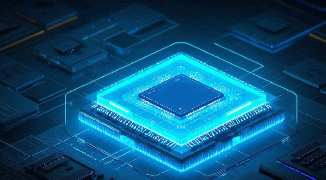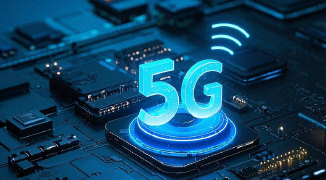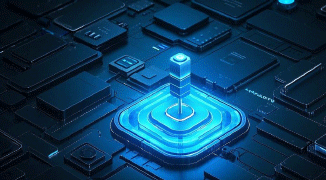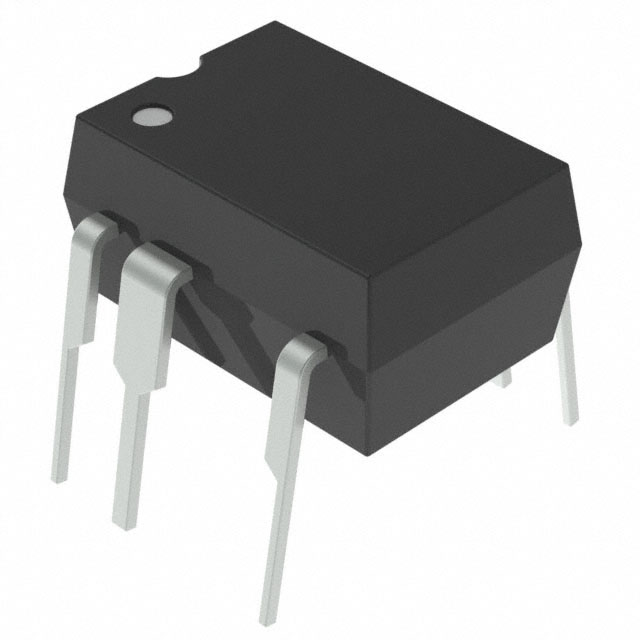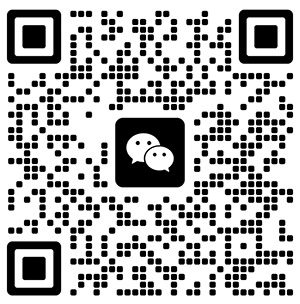Quantum Computing: Pioneering Research on Fundamental Components for a New Technological Era
In the rapidly evolving landscape of modern technology, quantum computing has emerged as a revolutionary force, promising to transform industries and solve complex problems that are currently beyond the reach of classical computers. At the heart of this technological frontier lies the research and development of fundamental quantum components, which are the building blocks enabling the extraordinary capabilities of quantum computers. This exploration into quantum components is not only a scientific pursuit but also a strategic imperative with far - reaching implications for the global economy, national security, and scientific progress.
1. The Quantum Computing Landscape: An Overview
1.1 The Basics of Quantum Computing
Quantum computing is based on the principles of quantum mechanics, a branch of physics that describes the behavior of matter and energy at the smallest scales. Unlike classical bits in traditional computers, which can represent either a 0 or a 1, quantum bits, or qubits, can exist in a superposition of both 0 and 1 states simultaneously. This property allows quantum computers to perform multiple calculations in parallel, potentially leading to exponential speed - ups in solving certain types of problems.
For example, in cryptography, quantum computers could potentially break many of the current encryption algorithms that rely on the difficulty of factoring large numbers. By using quantum algorithms, such as Shor's algorithm, a quantum computer could factorize large integers in a fraction of the time it would take a classical computer, threatening the security of current digital communication systems. On the other hand, quantum computing also offers the potential to develop new, quantum - resistant encryption methods, known as post - quantum cryptography.
1.2 The Significance of Fundamental Components
The performance and capabilities of quantum computers are highly dependent on the quality and functionality of their fundamental components. These components are responsible for generating, manipulating, and measuring quantum states. Just as the development of transistors revolutionized classical computing, the progress in quantum components is crucial for the advancement of quantum computing from a theoretical concept to a practical, widely - used technology.
The fundamental components of a quantum computer include qubits, quantum gates, and quantum memory. Qubits are the basic units of quantum information, while quantum gates are the equivalent of logic gates in classical computers, used to perform operations on qubits. Quantum memory, although still in the early stages of development, is essential for storing quantum information for longer periods, enabling more complex quantum algorithms to be executed.
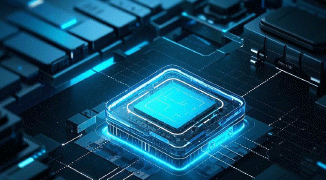
2.1 Superconducting Qubits
Superconducting qubits are one of the most promising types of qubits being actively researched. They are made from superconducting materials, which exhibit zero electrical resistance below a certain critical temperature. Superconducting qubits can be fabricated using techniques similar to those in classical semiconductor manufacturing, making them compatible with existing microfabrication processes.
One of the key advantages of superconducting qubits is their relatively long coherence time, which is the time during which a qubit can maintain its quantum state without decohering. Longer coherence times are crucial for performing more complex quantum operations. Research in this area focuses on improving the design of superconducting qubits to further increase their coherence times, reducing errors in quantum operations, and scaling up the number of qubits in a quantum processor.
For instance, researchers are exploring new materials and geometries for superconducting qubits. Some are experimenting with using different types of superconducting materials, such as niobium and aluminum, to optimize the performance of qubits. Others are investigating the use of 3D architectures for superconducting qubits, which can potentially reduce the coupling between qubits and the environment, leading to longer coherence times.
2.2 Quantum Dots
Quantum dots are another type of qubit candidate. These are nanoscale semiconductor particles that can trap electrons, and the quantum states of these electrons can be used to represent qubits. Quantum dots offer several advantages, including their small size, which allows for high - density integration, and their ability to be precisely controlled using external electric and magnetic fields.
Research on quantum dots as qubits is centered around improving their stability, reducing noise, and enhancing their coupling with other qubits. Scientists are also working on developing methods to integrate quantum dots with other components, such as waveguides and optical cavities, to enable efficient quantum communication and information processing.
For example, recent studies have focused on using quantum dots to create single - photon sources. By carefully controlling the emission of photons from quantum dots, researchers aim to develop reliable sources of single photons, which are essential for applications such as quantum communication and quantum key distribution.
2.3 Topological Qubits
Topological qubits are a relatively new and exciting area of research. They are based on the concept of topological states of matter, which are highly robust against external perturbations. Topological qubits have the potential to offer extremely long coherence times, making them highly attractive for large - scale quantum computing.
However, the development of topological qubits is still in its early stages, and significant challenges remain. One of the main challenges is the identification and manipulation of suitable topological materials. Researchers are actively searching for materials with the right topological properties and developing methods to fabricate and control topological qubits.
Some theoretical research has proposed the use of Majorana fermions, which are exotic particles predicted by quantum field theory, as topological qubits. Although Majorana fermions have not been definitively observed in a solid - state system yet, their potential as topological qubits has generated a great deal of interest in the scientific community.
3. Challenges in Quantum Component Research
3.1 Decoherence and Error Correction
Decoherence is one of the most significant challenges in quantum computing. It refers to the loss of quantum coherence due to the interaction between qubits and their environment. Decoherence can cause errors in quantum operations, leading to incorrect results. To address this issue, researchers are developing error - correction codes and techniques.
Quantum error - correction codes are designed to detect and correct errors in quantum states. These codes work by encoding a logical qubit using multiple physical qubits. For example, the surface code is a widely studied quantum error - correction code that uses a two - dimensional lattice of qubits to encode a logical qubit. However, implementing quantum error - correction requires a large number of qubits and complex quantum operations, which poses significant challenges in terms of both hardware and software.
3.2 Scalability
Scaling up the number of qubits in a quantum computer is essential for achieving practical quantum advantage. However, as the number of qubits increases, the challenges of controlling and maintaining the coherence of qubits also grow exponentially. Each additional qubit requires precise control of its quantum state and accurate coupling with other qubits, which becomes increasingly difficult to achieve.
To overcome the scalability challenge, researchers are exploring different architectures and integration techniques. Some are working on developing modular quantum computing systems, where smaller quantum modules can be combined to form larger quantum processors. Others are investigating the use of new materials and fabrication techniques to improve the scalability of quantum components.
3.3 Inter - qubit Connectivity
Efficient inter - qubit connectivity is crucial for performing complex quantum algorithms. In a quantum computer, qubits need to be able to interact with each other in a controlled manner. However, achieving high - quality inter - qubit connectivity while maintaining the coherence of qubits is a significant challenge.
Researchers are exploring various methods to improve inter - qubit connectivity, such as using microwave resonators, optical cavities, and superconducting waveguides. These methods aim to provide a reliable and efficient means of transferring quantum information between qubits. For example, in a superconducting quantum processor, microwave resonators can be used to couple qubits together, allowing for the implementation of multi - qubit quantum gates.
4. The Future of Quantum Component Research
4.1 Potential Applications
The development of advanced quantum components has the potential to open up a wide range of applications. In addition to cryptography, quantum computing could revolutionize fields such as drug discovery, materials science, and optimization problems.
In drug discovery, quantum computers could simulate the behavior of molecules at the quantum level, allowing researchers to design new drugs more efficiently. By accurately predicting the interactions between drugs and their target molecules, quantum - enabled simulations could significantly reduce the time and cost of drug development.
In materials science, quantum computing could help in the design of new materials with unique properties. For example, researchers could use quantum simulations to explore the electronic structure of materials and predict their physical and chemical properties, leading to the development of new superconductors, catalysts, and high - strength materials.
4.2 Global Competition and Collaboration
The research and development of quantum components are highly competitive on a global scale. Many countries, including the United States, China, and several European nations, are investing heavily in quantum computing research. This competition is driving rapid progress in the field, with each country aiming to gain a technological edge in this emerging area.
However, there is also a growing recognition of the need for international collaboration. Quantum computing is a complex and interdisciplinary field that requires the expertise of scientists and engineers from multiple disciplines. International collaboration can accelerate the development of quantum components by sharing knowledge, resources, and research facilities. For example, some international research projects are focused on developing common standards for quantum computing, which will be essential for the interoperability of quantum systems in the future.
In conclusion, the research on fundamental components for quantum computing is at the forefront of technological innovation. While significant challenges remain, the progress made in recent years has been remarkable. The development of high - quality qubits, efficient quantum gates, and reliable quantum memory is not only crucial for the advancement of quantum computing but also holds the key to unlocking a new era of technological capabilities. As we continue to explore the potential of quantum components, we are on the verge of a technological revolution that could reshape the world in ways we can only begin to imagine. Whether it is in solving complex scientific problems, revolutionizing industries, or enhancing national security, quantum computing has the potential to be a game - changer, and the research on its fundamental components is the foundation upon which this future is being built.
Related information

-
LNK304DN-TL Power Integrations

-
LNK304GN-TL Power Integrations

-
LNK304DG-TL Power Integrations
-
TNY277PN Power Integrations
-
TNY276PN Power Integrations
-
TNY278PN Power Integrations

-
TNY278GN-TL Power Integrations

-
TNY280GN-TL Power Integrations

-
TOP266KG-TL Power Integrations
-
TOP258PN Power Integrations
-
TOP253PN Power Integrations
-
TOP253PNAU Power Integrations


